The connective tissue
Connective tissues are most abundant and widely distributed in complex animals body and named as connective tissues. Because of their special function of linking and supporting other tissues/organs of the body. They range from soft connective tissues to specialised types, which include cartilage, bone, adipose, and blood.
In all connective tissues except blood, the cells secrete fibres of structural proteins called collagen or elastin.
The fibres provide strength elasticity and flexibility to the tissue. These cells also secrete modified polysaccharides, which accumulate between cells and fibres and act as matrix (ground substance).
The connective tissues are classified into three types as folloes:
Loose connective tissue
The loose connective tissue has cells and fibres loosely arranged in a semi-fluid ground substance.
Areolar tissue present beneath the skin. Often it serves as a support framework for epithelium. It contains fibroblasts (cells that produce and secrete fibres), macrophages and mast cells.
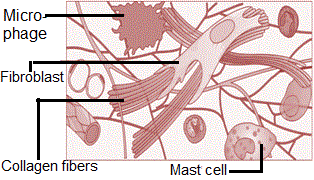
Adipose tissue is another type of loose connective tissue located mainly beneath the skin. The cells of this tissue are specialised to store fats.
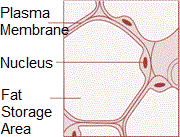
The excess of nutrients which are not used immediately are converted into fats and are stored in this tissue.
Fibres and fibroblasts are compactly packed in the dense connective tissues.
On the basis of orientation of fibres pattern, are called dense-regular or dense-irregular tissues.
Dense regular connective tissues
In the case of dense regular connective tissues, the collagen fibres are present in rows between many parallel bundles of fibres. Tendons which attach skeletal muscles to bones and ligaments which attach one bone to another are examples of this tissue.
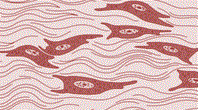
Dense irregular connective tissue
It has fibroblasts and many fibres (mostly collagen) that are oriented differently.
This tissue is present in the skin. Cartilage, bones and blood are various types of specialised connective tissues.
The intercellular material of cartilage is solid and pliable and resists compression.
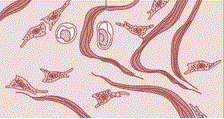
The cells of this tissue (chondrocytes) are enclosed in small cavities within the matrix secreted by them.
Most of the cartilages in vertebrate embryos are replaced by bones in adults.
Specialised connective tissue
Cartilage is present in the following :
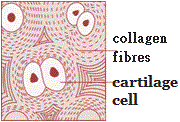
Bones have a hard and non-pliable ground substance rich in calcium salts and collagen fibres which give bone its strength.
It is the main tissue that provides structural frame to the body. Bones support and protect softer tissues and organs. The bone cells (osteocytes) are present in the spaces called lacunae.
Limb bones, such as the long bones of the legs, serve weight-bearing functions.
Bones also interact with skeletal muscles attached to them to bring about movements.
The bone marrow in some bones is the site of production of blood cells.
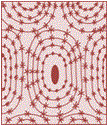
Blood is a fluid connective tissue containing plasma, red blood cells (RBC), white blood cells (WBC) and platelets. Blood is the main circulating fluid that helps in the transport of various substances.
| RBC | WBC | Platelets |
|---|---|---|
 |
 |
 |
